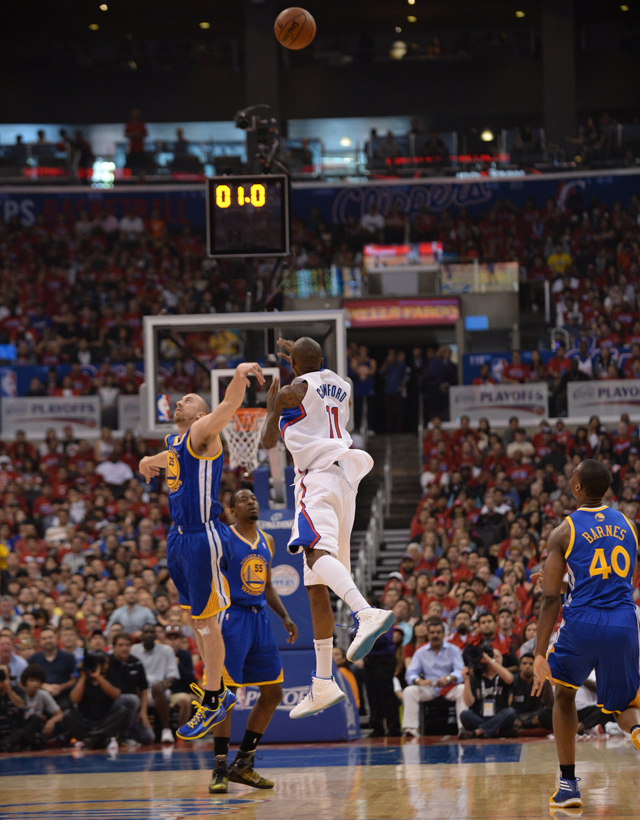
Think about a four-point shot. Do not laugh, do not click off this page. Deep breath. Continue.
Ponder our Clipper buddy Jamal Crawford, a fellow who never met a shot he didn’t love, launching a buzzer-beater from the long side of half court in last season’s Playoffs against the Warriors. Sure, it was just the end of the first quarter, but let’s suppose it was the end of the game, and the Clips were down 3 or 4, and Crawford nailed a 50-footer just like this. The Clippers would win if down by 3; they’d go to OT if down by 4. Either way the arena would go even crazier than it did when this three-ball prayer dropped through.
Remember, the three-point shot was considered heresy when it first came into the League. It had bounced around as a novelty in some parts for decades, but it wasn’t instituted by the NBA until 1979 and wasn’t made mandatory for all NCAA conferences until 1986. Now you can’t imagine the game without it.
Trust me: At the beginning, the three-point shot was considered a carnival act. But shooters have gotten so good, taking binocular-range jump shots as easily as 12-footers, that the time has come to reward those who can hit from not just downtown but the next county. Why? To open things up, to give little guys (under 6-6) a better chance, the same reasons the three-pointer was originally brought in. Where would the four-point line be? How about half-court and slightly inside at the edges. See how that goes. Move it back if the quad gets too easy. Imagine having to actually defend shooters everywhere!
Risk-reward strategy would develop. Four-point marksmen would bloom. The over-and-back rule would vanish (it’s not needed with a 24-second clock, anyway). Voila! The game becomes wild and wide-open again. And don’t forget the greatest part of all: the five-point play.
Easy there, Jamal!
Rick Telander is our Basketball Evangelist and the lead sports columnist for the Chicago Sun-Times. Follow him on Twitter @RickTelander.